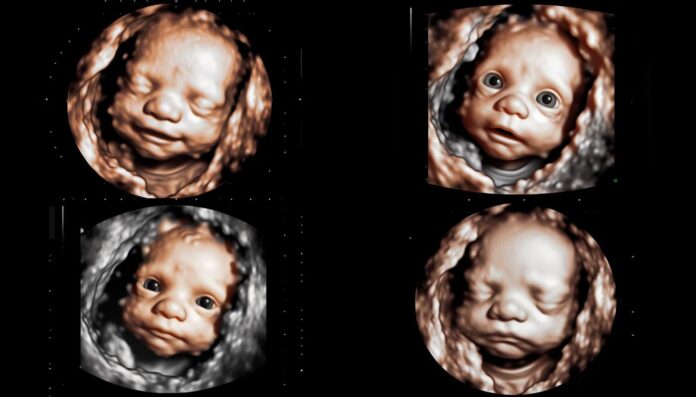Welcome back to our fascinating series on facial expressions, starting with Baby’s First Expressions as my latest topic.
I’ve already ventured through “A Day in the Life of a Face,” revealing the multitude of emotions one face can display within 24 hours. Then, I unearthed the neuroscience behind the “Science of Smiles, Scowls, and Surprises.” Most recently, I took a global tour to explore “Facial Expressions Around the World” and how different cultures interpret these universal signals.
Now, let’s pivot to a subject very close to my heart: Baby’s First Expressions. I’ve always been fascinated by the mysterious kingdom of child development. Before my first child was born, I immersed myself in various parenting books. One that stood out was ‘A Child Is Born‘ by Lennart Nilsson.
This enlightening read gave me a front-row seat to my unborn child’s journey. I was one of those weird parents who wanted to establish a link. I try my best to establish communication with my unborn children. The book by Lennart Nilsson offered me a way in. It was like a magical guide, detailing when my baby could smile, hear, or even grimace. Come the second and third ultrasound scans, I was eagerly scanning the images for any sign of a smile or a hidden message from my unborn child.
This intrigue didn’t end at birth; it was just the beginning. Observing the array of emotions expressed by my little ones, from their first moments to toddlerhood, was nothing short of magical. Even during those sleepless nights, peace seemed like a distant dream.
So, why should you stick around for this post? Because Baby’s First Expressions do not only sit on Instagram pages of cuteness but are also incredibly revealing. We’ll explore the science behind these endearing grimaces and grins, illuminate their meaning, and even explore some lesser-known facts.
It’s a topic packed with wonder, scientific intrigue, and a sprinkle of nostalgia for us parents. On that note, let’s jump into the captivating world of Baby’s First Expressions.
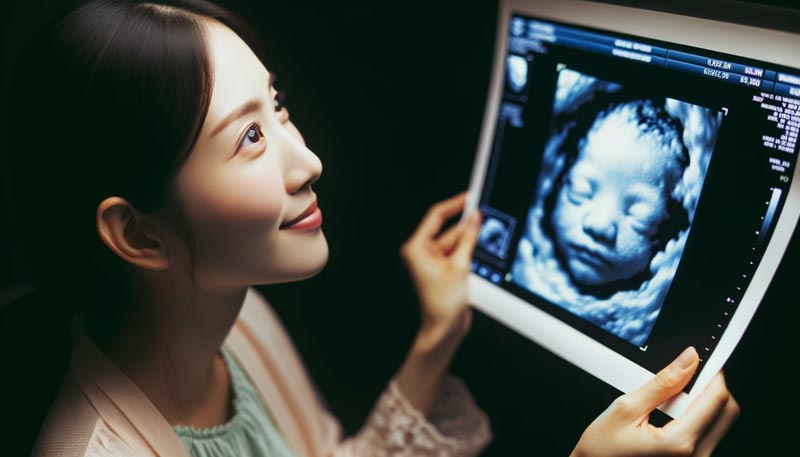
Baby’s First Expressions Before the First Cry
Hold onto your seats! If you are anything like me, a person who takes great pleasure in detail and the need to understand worldly wonders, then the seldom discussed baby’s first expressions before they’re even born will captivate you. Yes, you read that right; as Lennart Nilsson’s book detailed, the facial gymnastics expressions begin much earlier than you’d think.
Advances in 4D ultrasound technology have offered us a new lens to view these early emotional displays. Studies indicate that babies practice facial expressions like mouthing, sucking, and blinking even in the womb. These are not random but a precursor to purposeful behaviour like feeding and emotional expression post-birth.
If you thought your newborn’s facial repertoire was impressive, get this: foetuses between 36 to 40 weeks have mouthing as their most frequent expression, closely followed by blinking. Interestingly, the frequency of these expressions varies from those found before nine months of gestation.
But why do these expressions matter? Are they just for the show? These early facial movements are indicators of brain development and Central Nervous System (CNS) maturation. So, every time you see a scan of your baby making a face, know it’s a sign of their progressing neural pathways.
Your baby isn’t just reacting to the cosy environment of the womb; they’re also responding to external stimuli. For instance, playing music intravaginally at more than 16 gestational weeks led to significant mouthing and tongue expulsion. These cute antics indicate the signs of auditory-motor system development.
Each scan presents parents eagerly awaiting their newborn’s arrival opportunity for confirmation. But these scans also tell us the baby’s first expressions are already in rehearsal, laying the foundation for the emotional range they’ll demonstrate outside the womb.
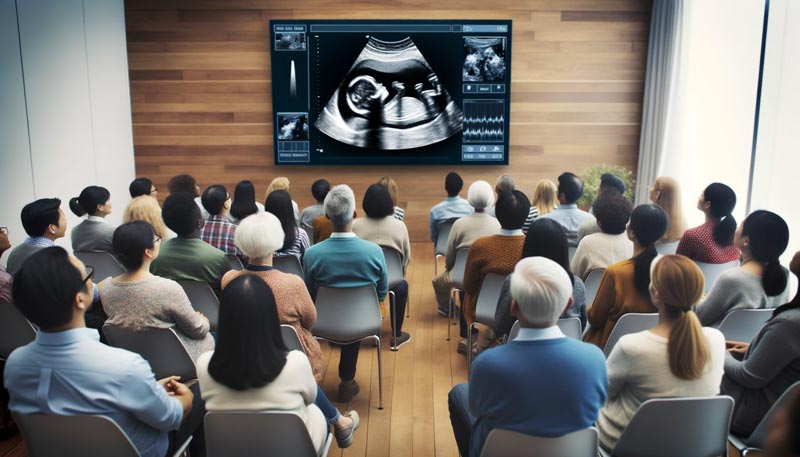
The Emotional Array of a Baby’s Day
Traversing the landscape of a baby’s first expressions is akin to watching a high-speed film full of twists and turns. Any parent who’s been through it will agree. But each sibling is unique; just when you think you’ve figured it all out, an unexpected punch to the gut reminds you otherwise.
Believe it or not, infants as young as 2–3 months can already exhibit a range of emotions like joy, anger, and even fear. If you’ve ever observed a baby, you’ll know how rapidly their emotional states can shift. One minute, they’re all smiles and wailing in the blink of an eye.
These are not random mood swings. According to Richard J. Davidson‘s “The Emotional Life of Your Brain” (a groundbreaking book which brings a new understanding of our emotions), emotions have a profound neurological basis. For babies, their rapidly fluctuating emotional states are a testament to their immature emotion regulation capacities. The more they grow, the better they get at regulating these rollercoaster emotions, but the early months are particularly volatile.
What is the primary reason behind these swift emotional shifts? Limited regulatory abilities. Babies in their first year mainly rely on their caregivers for emotional modulation. So, if a toy is taken away, expect a rapid shift from joy to anger.
While the baby’s first expressions presents an emotional juggling act that might seem chaotic, it’s part and parcel of normal infant development. It serves as a window into their evolving neural networks, each expression laying down the neural pathways for more complex emotional interactions later in life.
Interpreting Baby’s First Expressions for Effective Communication
To blend science with hands-on parenting, the following section will guide you through the captivating world of a baby’s first expressions. The intent is to marry scientific insight with the wisdom of real-life experience.
As a parent of three, I find this topic essential. Understanding these early cues is about more than appreciating their cuteness; it’s about decoding your baby’s earliest attempts at communication.
1. How to Understand Common Baby Facial Expressions
When my first child was born, I was utterly fascinated by every little face they made. This was not based on capturing those cute moments for Instagram but more about how I could learn to communicate.
Daniel Stern’s work resonated with me because he discusses how newborns can emotionally organise themselves. So, those early head turns, smirks or frowns? They’re not random but intentional signs your baby is giving you.
2. The Role of Emotional Signals in Attachment
With each of my kids, I noticed that understanding their emotional cues made a difference in our bonding experience. Research shows the crucial role these early interactions play in secure attachment. Once you get the hang of each expression, a new communication channel opens between you and your baby.
3. Significance of Early Facial Movements
If you’ve ever seen a baby scan, you know that your little one starts practising expressions long before they make their grand entrance. They are not meant for show. These early facial movements are like a sneak peek into their developing brain. Knowing this added an extra layer of excitement when scanning those ultrasound images.
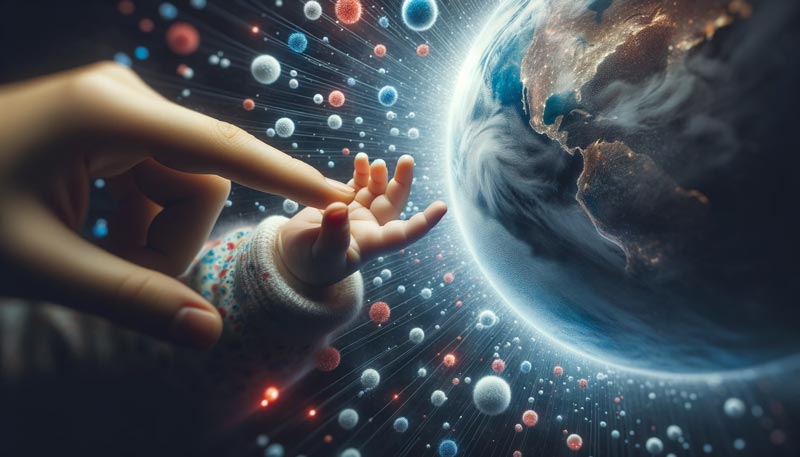
Insights for Those New to Parenthood
As a parent, interpreting your baby’s first expressions can feel like learning a new language. However, these expressions provide a potent window into your child’s emotional world. So, how can you better understand and engage with these early emotional cues to foster their development?
Don’t dismiss those early facial contortions as mere biological reflexes. They’re early attempts at communication. Daniel N. Stern, in “The First Relationship: Infant and Mother”, delves into how even the most superficial expressions can be laden with emotional meaning.
For instance, a raised eyebrow or a focused gaze may not just be your baby reacting to light and shadow. These can be early indicators of curiosity or engagement. Recognising these nuanced cues is your first step in establishing an emotional dialogue with your child.
These expressions also serve as early markers for your baby’s neurological development. Meredith Small’s anthropological perspective in “Our Babies, Ourselves” supports this, emphasising that a simple yawn or a grimace indicates maturing neural pathways. It tells you that your baby is not merely a passive receiver of stimuli but is actively exploring their environment, even if it’s limited to the cot or pram.
Understanding your baby’s emotional cues can significantly impact the bonding process. Stern again provides valuable insight here. When your baby smiles, and you smile back, you reinforce a positive emotional loop. This mutual exchange lays the foundation for a secure attachment and emotional resilience later in life.
While being attentive is essential, avoid becoming overly anxious about missing a cue or misinterpreting an expression. As with most things, parenting is not an exact science, and it’s okay to make mistakes.
What matters is your overall responsiveness and willingness to adapt. Small’s book adds cultural context here, reminding us that parenting styles differ across cultures. Yet, the aim to understand and engage with our children remains universal.
This might seem like a lot, especially for those new to parenthood. I have realised that the more you engage with your baby’s first expressions, the more you’ll find that this emotional language becomes second nature, enriching your relationship with your child.
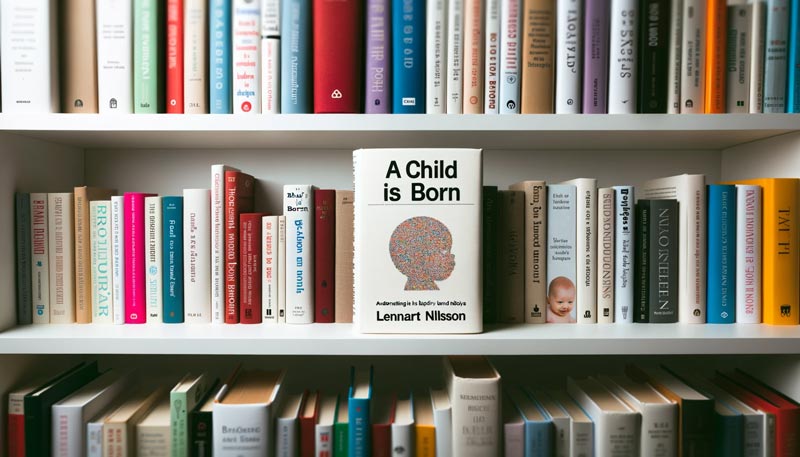
Baby’s First Expressions: Final Thoughts
Exploring the world of baby’s first expressions has been an enlightening experience. We’ve looked at the hidden messages behind each grin, grimace, and gaze. We identified that capturing these moments is not intended for social media but for understanding a profound language of emotion and development.
These early baby’s first expressions are stepping stones to a lifelong emotional dialogue, the first words in a conversation that will last a lifetime.
Why focus on the baby’s first expressions? Because they set the stage for future emotional intelligence, secure attachments, and cognitive growth. Each subtle shift in their facial muscles sends a signal, adding another piece to the puzzle of their developing personality.
Attuning to expressions is beneficial for them and a rewarding journey for you. Stern and Small offer different lenses to understand this dynamic, clarifying that parenting is about teaching, learning, and adapting.
The baby’s first expressions are a captivating introduction to your child’s emotional world. They are the prologue to an ongoing narrative that evolves each day. By tuning in now, you’re laying the foundation for a relationship marked by mutual understanding and emotional depth. When you next catch one of those baby’s expressions, know it’s a page in a much larger story.
A Journey Through Expressions:
This article is part 3 of my 5-part series delving into the world of facial expressions.
Past:
- A Day in the Life of a Face – I explored the myriad of emotions our faces display daily, from dawn’s first light to night’s quietude.
- The Science of Smiles, Scowls, and Surprises – I’ve plunged deep into the fascinating science behind why our faces move the way they do, from the neural pathways lighting up our smiles to the muscles crafting our scowls.
- Facial Expressions Around the World – I looked into the enigmatic interplay between universal emotions and cultural contexts, uncovering how a smile or a frown can mean the same yet be triggered differently across the globe.
Current:
Baby’s First Expressions – A detailed look at babies’ rollercoaster of emotions, from the mysterious expressions in the womb to the wide range of emotions exhibited during their early months.
Up Next:
Facial Expressions Challenge – Take on a fun and insightful challenge, consciously adopting each of the seven facial expressions daily.
Stay tuned as we continue this exciting exploration into facial expressions!
Sources
- AboEllail, M. A., & Hata, T. (2017). Fetal face as important indicator of fetal brain function. Journal of perinatal medicine, 45(6), 729-736.
- AboEllail, M. A., Kanenishi, K., Mori, N., Mohamed, O. A., & Hata, T. (2018). 4D ultrasound study of fetal facial expressions in the third trimester of pregnancy. Journal of maternal-fetal & neonatal medicine, 31(14), 1856-1864.
- Braungart-Rieker, J. M., & Stifter, C. A. (1996). Infants’ responses to frustrating situations: Continuity and change in reactivity and regulation. Child Development, 67(5), 1767–1779.
- Fairbanks, L. (1989). “Early Experience and Cross-Generational Continuity of Mother-Infant Contact in Vervet Monkeys.” Developmental Psychobiology, 22, 669–681.
- Hata, T., Dai, S. Y., & Marumo, G. (2010). Ultrasound for evaluation of fetal neurobehaviour development: from 2-D to 4-D ultrasound. Infant and child development, 19(1), 99-118.
- Izard, C.E., Hembree, E.A., Dougherty, L.M., & Spizzirri, C.C. (1983). Changes in facial expressions of 2- to 19-month-old infants following acute pain. Developmental Psychology, 19(3), 418–426.
- Kopp, C. B. (1989). Regulation of distress and negative emotions: A developmental view. Developmental Psychology, 25(3), 343–354.
- López-Teijón M, García-Faura Á, Prats-Galino A. Fetal facial expression in response to intravaginal music emission. Ultrasound. 2015 Nov;23(4):216-223.
- Sroufe, L.A.; Egeland, B.; Carlson, E.; Collins, W.A. (2005). “The Development of the Person.” New York, NY: Guilford Press.
- Yan, F., Dai, S. Y., Akther, N., Kuno, A., Yanagihara, T., & Hata, T. (2006). Four-dimensional sonographic assessment of fetal facial expression early in the third trimester. International Journal of Gynecology & Obstetrics, 94(2), 108-113.


